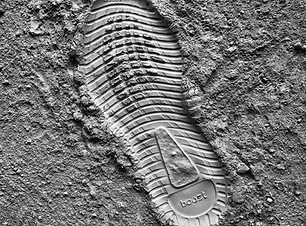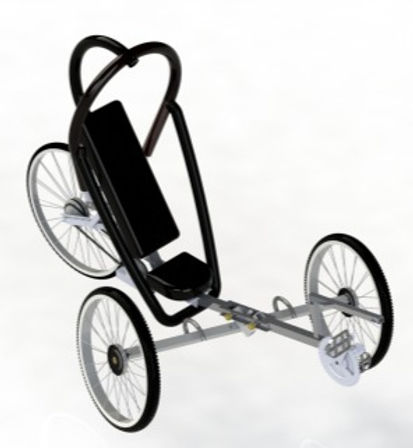Engineer with Passion
Human Powered
Vehicle
Competition


Personal Tasks
-
Design, build, and compete with a human-powered vehicle
-
Lead a team of 10 underclassmen through the engineering process
-
Oversee design and manufacturing of the entire vehicle
-
Design an original steering-system
-
Design an original frame
-
Obtain team resources
-
Funding
-
Space
-
Tools
-
Materials
-
-
Develop and manage CAD part & assembly models of the entire team

Hard Skills
-
PTC Creo Parametric
-
Solidworks
-
ANSYS FEA
-
Matlab
-
Mechanical design
-
System integration
-
Metalworking tools
-
Lathe
-
CNC
-
Pipe benders
-
Cutting & drilling tools
-
Welding jigs
-
-
Technical presentations
-
2D & 3D drawings
-
Budgeting & resource management
-
Composite design & moulding
-
Troubleshooting
-
Test plan & execution

Soft Skills
-
Leadership
-
Teamwork
-
Project management
-
Planning
-
Communication
-
Problem-solving
-
Troubleshooting
-
Sportsmanship
-
Sales
-
Internal & external conflict resolution
My first week in college I wandered into LU's only mechanical engineering club. The room contained only freshmen. Of them, I was the only student with experience using CAD, designing, manufacturing, or using the engineering process. So I lead the room in a brainstorming exercise. Unknown to me, I became the leader of a college club my first day in the department.
My 1st year
Improvements to the Team
We were the 2nd round of Freshmen to attempt this project. My biggest contributions involved setting the stage for future success by making the following changes:
-
No official space -> A dedicated lab for the club
-
No funding -> $6000/year in sponsorship from the university
-
Limited access to university tools -> 24/7 machine shop access
-
No dedicated tooling-> Our own tube-benders and specialty bike equipment
-
No process -> Taught all members the engineering design process
-
No sponsors -> Sponsored by machine shops providing labor and technical expertise, and bike shops which donated parts
-
No CAD -> Taught all team members Solidworks, made CAD models and drawings before manufacturing
-
No name -> A recognizable "Liberty HPVC" brand within the school, and literature to recruit future members
-
Raised placement in the race from the previous year
Vehicle Design
Considering the vehicle was designed by first-year students who also overcame the above organizational challenges, I am proud of our simple design.


My personal contributions were the FEA-driven roll hoop arcing above the driver's head and the unique steering system.
Roll Hoop
The rollover equipment was designed and analyzed in Solidworks. It proved effective in three different crashes, twice during testing and once during an in-race collision. Upon rollover the wheels, frame, and roll-hoop would touch the ground, but the driver would not regardless of collision angle. During a failed brake test I personally rolled twice at 35 MPH before popping into the air and landing upside-down, but emerged unscathed.
Steering
After test-driving the previous years' vehicle, the primary issues were discovered to be weight and turning radius. My teammates designed the light-weight frame, which could have been made lighter with beyond-freshman knowledge of statics and materials, and I tackled the steering system.
I designed a steering system that caused the vehicle's body to lean into turns, similar to a motorcycle or skateboard. This allowed us to take turns at extremely high speeds. Most of our overtakes therefore occurred while cornering because we could turn tighter and faster than any competitors.

While this system worked great during turns, we knew nothing of designing press-fits, sizing bearings, sprung versus unsprung mass, damping, etc. As such the vehicle was unstable during straights. This was not difficult to control as since the swaying aligned with the rider's cadence, but it looked hilarious and definitely slowed performance. Nevertheless, we placed comfortably in the upper-half of almost 40 teams. This year was all about learning, and boy did we learn a lot.
Increasing the gap between opponents in a race
My 2nd year
This year was also all about learning; college sophomores do not know as much as they think they do.

Our goal was to build the complex vehicle rendered above. It was to ride on 2 wheels and weigh only a little more than the previous vehicle despite an aerodynamic carbon fiber shell. Unfortunately with little understanding of system control or fluid dynamics, this was a long-shot, but biting off more than we could chew taught us a lot.
As team captain I oversaw the design and manufacturing of every vehicle aspect, and detail-designed the frame.

The frame was simulated in ANSYS. It was designed to be a skeleton for the aerodynamic shell, protect the driver, and mount all components. It was fabricated using 6061-T6 tubing, and for its size was incredibly lightweight:

I learned a lot about static design, system design and component layout, manufacturing, simulations, composites, teamwork, and leadership through this project. Unfortunately, the vehicle did not turn out as planned. Without proper layup equipment, our composite shell ended up weighing over 100 pounds and was left off the vehicle. Still, it was the first carbon structure attempted by the university and we learned a lot from the process.
We also failed to get the vehicle to balance, because a low-CG 2-wheeled design with a sharp enough turning radius for the competition was not feasible at our experience level. The result was this four-wheeled monstrosity:

The skills we learned with this failure, from how to work as a team through adversity, to how carbon-fiber parts should have been done, to the calculations I learned a little too late regarding vehicle balance and control, make this one of my greatest growth experiences and I wouldn't trade it for anything. Despite our many mistakes, and a relative lack of funding and equipment compared to other teams, we still placed higher this year than any year prior.
From both the engineering lessons we learned and the significant amount of funding, tooling, and space we procured by the end of the season, we set the following years up for great success. The following year it became one of the largest clubs in the engineering department, placed fifth out of 40, and was displayed to the entire student body during a campus event. I, meanwhile, had begun to form the new Formula SAE team by this time.
